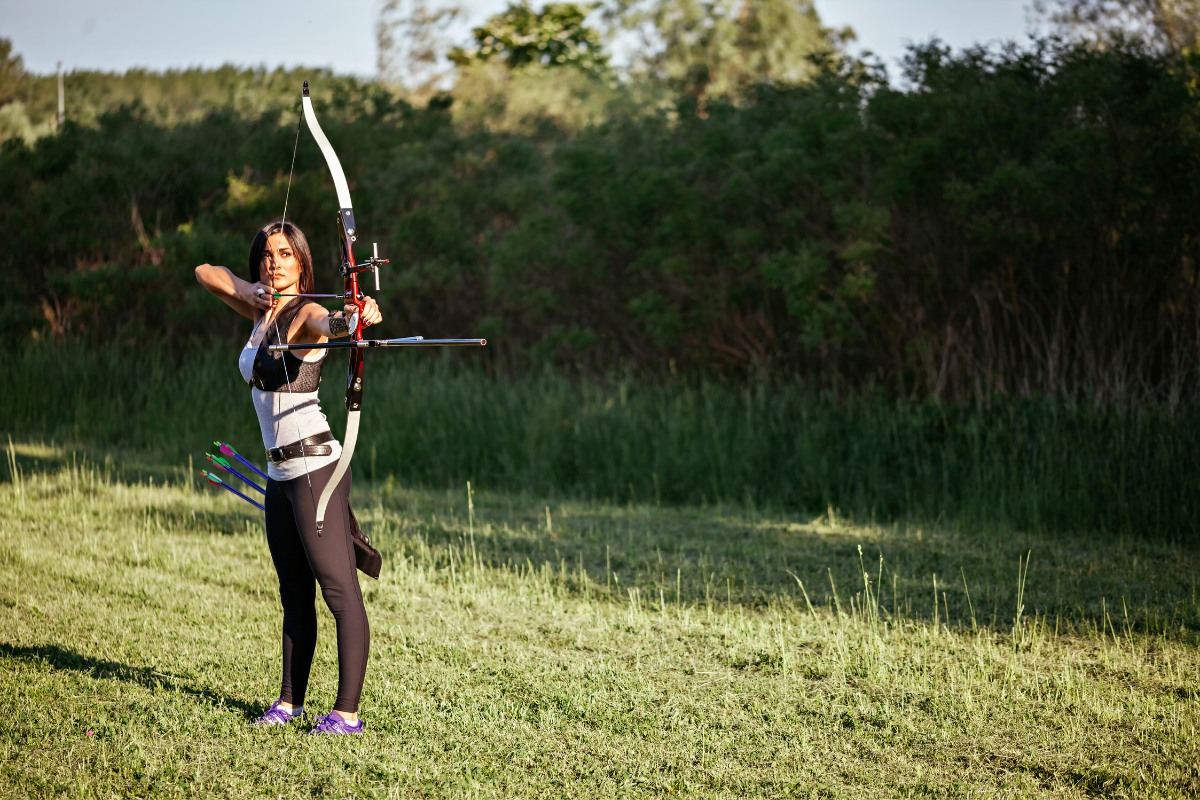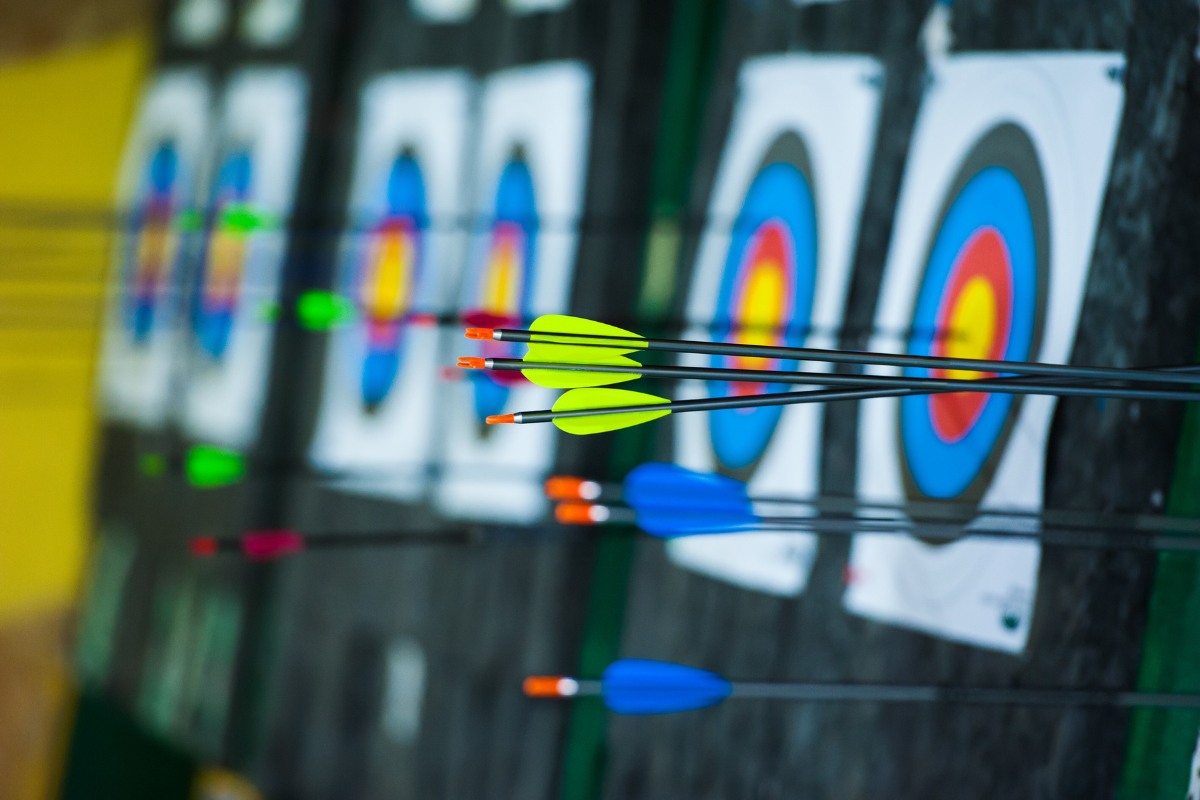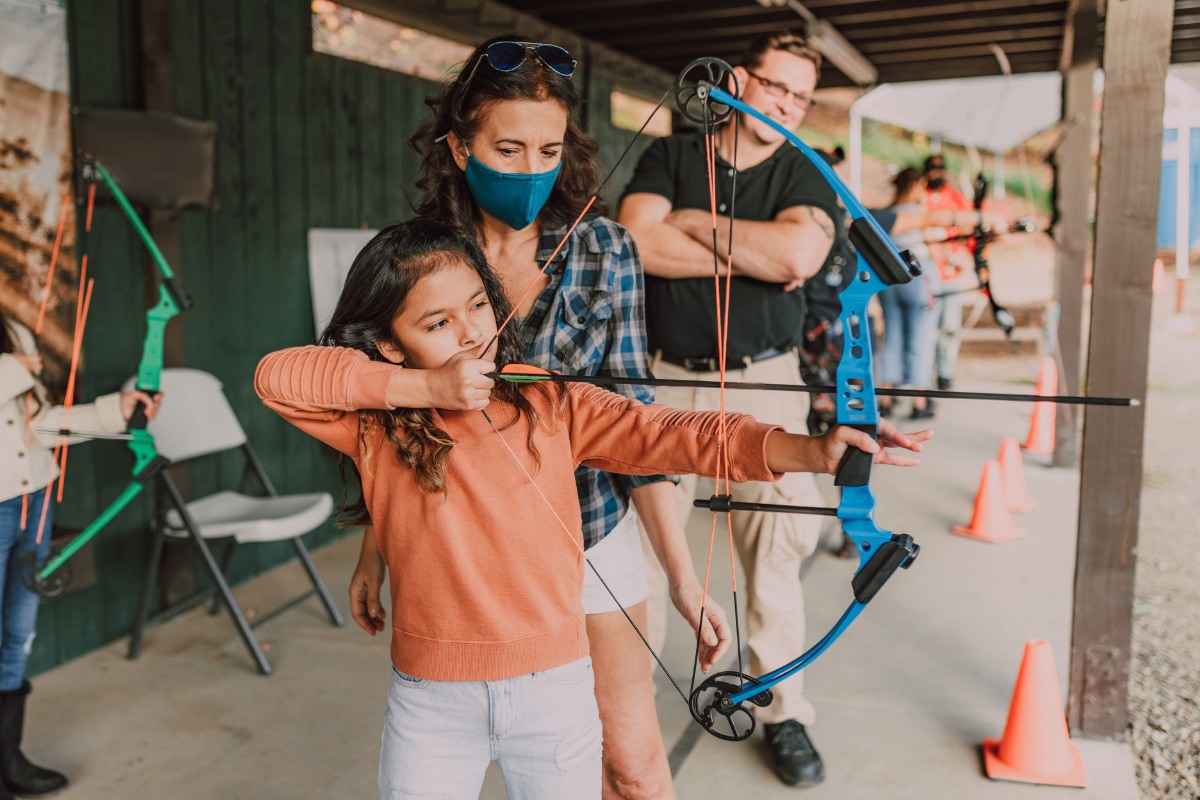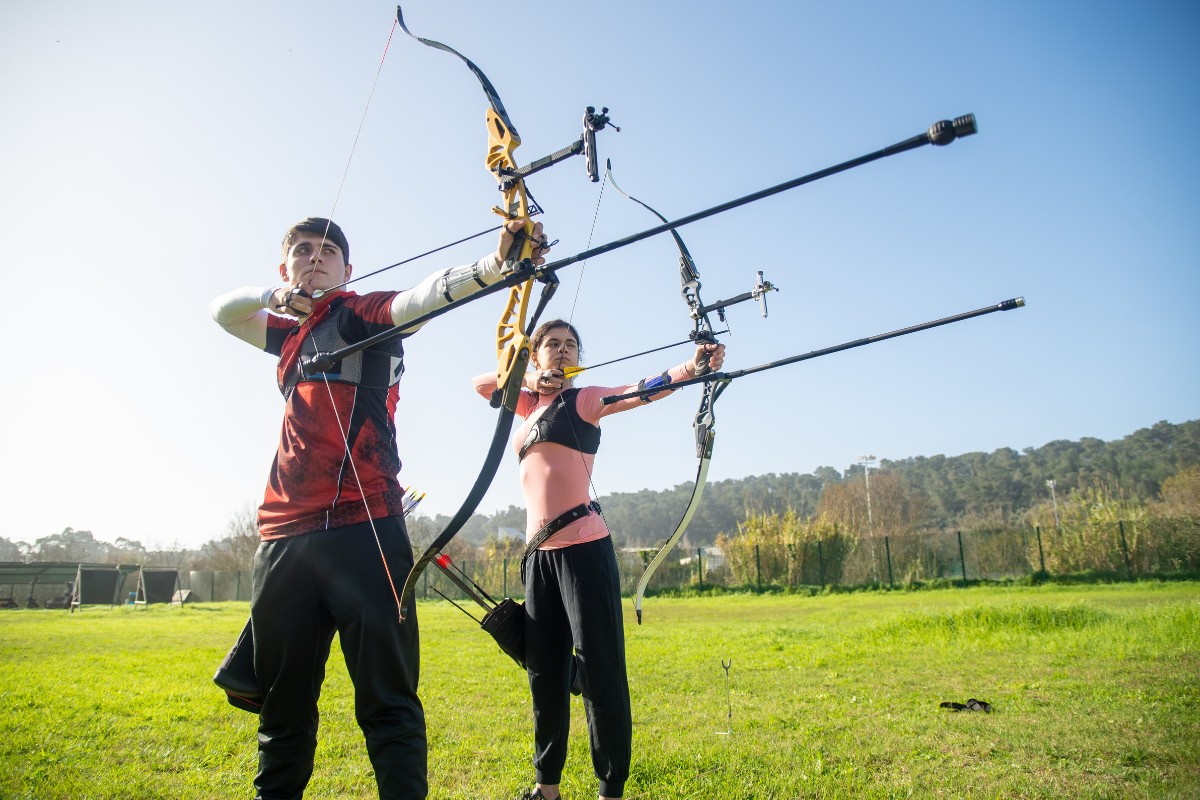For a low-intensity, stationary sport, archery has a lot of benefits.
We have heard the conventional benefits such as improved flexibility and better hand-eye coordination, so now we attempt to answer the question: Does archery improve posture?
Yes, it does. Archery puts a strain on the upper body muscle groups such as the levator scapulae, trapezius, supraspinatus, infraspinatus, and rhomboids. With proper and consistent form, archery will help you develop these muscle groups, resulting in better posture.
From the answer, you can see there is much more to archery than being just another fun hobby. Unfortunately, even with the posture benefits, the answer to the question, “Will archery benefit me?” is a firm MAYBE.
Nonetheless, there are some things you can do to make sure you enjoy these benefits, but more on that later. For now, are there other benefits associated with archery?
The Health Benefits of Archery
The benefits of archery do not end with good posture. An archer also enjoys the following benefits.
Losing Weight
According to Harvard, in just 30 minutes of shooting, your body burns up to 150 calories. For a low-intensity exercise, this is quite something as it is similar to playing badminton or engaging in Tai Chi for the same duration. For more pronounced and/or fast results, you need to combine it with other weight loss exercises.
Improved Eyesight
After months of archery practice in military camps, military officers noticed that the eyesight of trainees seemed to improve. This paved the way for actual tests into the effects of archery on eyesight. The results showed that these benefits are not just enjoyed by the archer, but also by people watching from the sidelines.
While aiming, the general procedure is to check through your sight, then at the target, then at the sight again before releasing. In concept, this is the exact same diagnosis that is given by doctors to cure eyesight problems. In the diagnosis, you are to put a finger directly in front of your eyes and focus on it for a while. Then, bring a distant object directly in front of you into focus, such that your finger will appear blurry. Repeating this over and over benefits your eyes.
People watching as the archer shoots benefit from an exercise called pursuit tracking. This is where they watch the arrow as it moves from the archer to the target. It improves their eyes’ speed and flexibility.
Strength Building
Archery is pretty much like lifting weights. When practicing a proper draw, the hands, shoulders, chest, core, and arms are all engaged in one way or another. Holding your draw as you aim then releasing repeatedly leads to muscle development in most muscle groups in the upper body. If you think about how professional archers shoot up to more than 100 arrows in a day/session, you get the picture of how it can build muscle.
Increased Patience and Focus
Hitting the target is all about patience. Once you have reached full draw, you have to shut out all the distractions around you, which are increased tenfold when you are shooting in a tournament, and the pressure in order to hit the target. These simple acts of holding on and shutting out distractions go out of the archery range and help to deal with many life situations.
Improved Confidence
Archery is as much a competition against oneself as it is against other people. As such, the improvements in form, technique, and accuracy are measurable and result in a boost in self-confidence and self-esteem.
Archery Form and Stance Tips
The benefits of archery are not guaranteed. Archery has many aspects and elements, so the possibility of doing something wrong is very high. For some archers, the problems are with their form, which may be easy to identify if one has a coach or trainer. For others, it is not that simple as the problem either lies within their equipment or even in their preparation. By doing the following things right, you will get to enjoy all the benefits of archery.
Work on Your Form
This point is for archers who haven’t fully developed their form yet. If you have, you can move on to the next point because changing your form will only make things worse. But you can read through the types of stances just for the heck of it.
In archery, your form is king. Before you draw, your hands should be at about your nose height. The bow hand and the draw hand should be extended in front of you in line with the target. With your bow hand extended at the same height, draw the string towards your face. On full draw, the draw hand will slightly slope towards your face from the elbow and you should feel your rear shoulder rotate.
Most beginners make a mistake on this first step and stick with it all through their initial training. As you draw or hold your draw, you should feel the muscles in your back working, not your biceps or triceps. Not only will this not benefit your posture, but it could also lead to serious injury.
Even if you don’t have a coach or trainer, there is a way to find out whether you are using the correct muscle groups. It is only during the first few times that you can get sore. Once you get used to it, it will be almost impossible to tell. After your first session, if you feel soreness in your biceps or triceps, you have been doing the wrong thing and you should seek assistance. If you feel some soreness near the shoulder blade, then you are on the right track.
The different types of stances that you can adopt are:
Even Stance
In the even stance, the archer places both feet at an equal distance from the shooting line, shoulder-width apart. Most archers use this stance when they first learn archery. However, it is not particularly sturdy and doesn’t offer your back enough support. Failure to progress to either of the stances below will cost you pretty much all the benefits discussed above.
Open Stance
The dominant foot is placed a foot in front of the other and faces the target slightly. It is much more stable than the even stance but there is a downside. Archers use their arm muscles as opposed to their back muscles. However, if you perfect it, you can learn to use your back muscles and consequently improve your overall posture.
Closed Stance
The archer faces slightly away from the target, and the non-dominant foot is placed a foot in front of the other. It provides good support and perfect arm-shoulder alignment. Sometimes, it makes the archer lean away from the target, which could lead to overdrawing and consequently, stacking. This shouldn’t be a problem once you perfect it though.
Oblique Stance
This stance is the hardest to work with and is mostly used by experts. The dominant foot is placed a foot in front of the other, which is placed at a right angle to the shooting line. The body remains in total equilibrium, and it is the perfect stance to develop your posture.
Whichever you choose, make sure you are not leaning to one side and the weight is evenly distributed on both feet.
Warm-Up Before Your Sessions
A good warm-up before actually shooting arrows removes tension and soreness for the perfect form from the beginning. It also improves flexibility and blood flow. You can warm up using either or all of the three exercises below:
The first warm-up exercise works on the subscapularis muscle. Stretch out your arms to your sides horizontally and flex your elbows at 90 degrees. Now gently try to touch your shoulder blades together. You should feel a stretch in the muscles of the front of your shoulder. Now straighten out your elbows and repeat the stretch. You should hold each position for five seconds and then release.
The second stretch targets the posterior muscles which are the bowstring pullers. Place your right arm across your chest and rest your hand on your left shoulder. With your left hand on your right elbow, push the elbow to your chest. Remain in this position for 20-30 seconds then release. Switch arms after doing five reps.
The supraspinatus muscle is the target of the final stretch. Put your left hand behind you and hold your left wrist with your right hand. Pull your left wrist to the right. Hold it in that position for about 30 seconds then release. Switch arms after doing five reps. You should feel something stretch at the top of your shoulder.
These stretching exercises will go a long way toward developing a great posture and preventing injuries.
Avoid Heavy Bows
When most beginners get a hang of the basics, they tend to move to bows with a heavier draw weight. Sure, it is okay to use a stronger bow especially if you are aiming at long distances, but the second you start using too heavy a bow, your form can get sloppy and you can start doing things wrong. When you can’t withstand the weight of your bow, it can lead to leaning back and bending your spine. It also leads to using arms instead of back to draw, leading to back problems.
If you have to increase the weight of your bow, I would suggest a gradual increase and couple it with the right exercises to condition your body.
Related Questions
How Can I Find My Body’s Preferred Foot Stance for Archery
The simple steps below will assist you to find the position that your body prefers. You will require the help of a friend.
- Place the target at the center of a wide backstop/target wall.
- Assume the position/stance that you normally use.
- Turn around and close your eyes without moving your feet.
- Turn back and face the target then draw.
- Have your friend tell you whether the trajectory will hit the wall/backstop.
- Release the arrow and go check your results.
If the target hits a good amount away from the target, then your feet weren’t in the natural centering point of your body. You are fighting your body as it tries to “center” itself. Repeat the six steps over and over with the different stances discussed above. The perfect stance for you is that which will have you hitting the target or closest to it.
Conclusion
Archery is not a band-aid for every back issue out there, but it has many benefits to your posture, among other things. Its social, health, and mental benefits make it one of the best all-around exercises to add to your routine.








